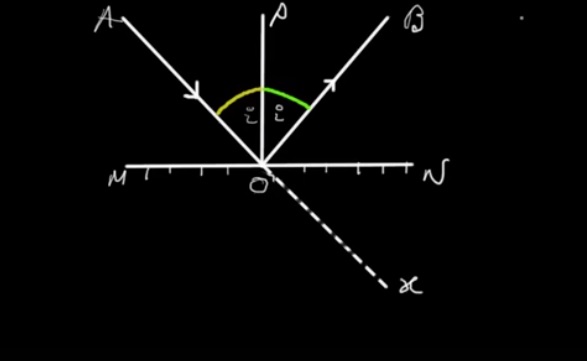Light is an essential element in our lives, enabling us to see the world around us. But have you ever wondered how light behaves when it encounters different surfaces?
Understanding Reflection of Light:
When light waves strike a surface, they bounce back—this phenomenon is known as the reflection of light. When light hits an object or a surface, it can either be absorbed, transmitted through the object, or reflected. Reflection occurs when light waves bounce back into the same medium from which they originated.
Types of Reflection:
Reflection is broadly classified into two categories: regular (specular) reflection and diffuse reflection.
Regular Reflection: Regular reflection, also known as specular reflection, occurs when light waves strike a smooth and polished surface, such as a mirror or a still body of water. In this type of reflection, the light waves bounce off the surface at the same angle as the incident angle, resulting in a clear and well-defined reflection.
Diffuse Reflection: Diffuse reflection occurs when light waves strike a rough or uneven surface, such as a piece of paper or a wall. In this type of reflection, the light waves scatter in different directions, creating an irregular and diffused reflection. Diffuse reflection is responsible for the phenomenon of seeing objects that are not directly illuminated.
Laws of Reflection:
The reflection of light follows two fundamental laws:

The Law of Reflection: The angle of incidence (the angle between the incident ray and the normal) is equal to the angle of reflection (the angle between the reflected ray and the normal). This law states that the direction of the reflected ray is symmetrically opposite to the direction of the incident ray.
The Normal Line: The normal is a conceptual line drawn at a right angle to the surface at the spot where the incident ray makes contact. Both the angle of incidence and the angle of reflection are calculated relative to this line.
Real-World Applications:
The phenomenon of light reflection is widely utilized in everyday life and across numerous professional fields. Let's explore a few of them:
Mirrors and Optics: Mirrors, whether in households, cars, or telescopes, utilize the principles of reflection to create clear and accurate reflections. Optical systems, such as cameras and microscopes, rely on precise control of reflection to capture and manipulate light for imaging purposes.
Fiber Optics: Reflection plays a crucial role in fiber optic communication. Optical fibers rely on total internal reflection to carry light signals across long distances while keeping signal loss to a minimum. The ability of light to bounce off the inner walls of the fiber ensures efficient transmission of data and information.
Architecture and Design: Reflection is often utilized in architecture and design to create visually appealing spaces. The use of reflective surfaces, such as glass facades, polished metals, and mirrors, can enhance natural lighting, create the illusion of spaciousness, and add aesthetic value to buildings and interiors.
Safety and Signage: Reflective surfaces and materials are widely utilized in road signs and safety equipment to enhance visibility. Reflective tapes, markers, and coatings are designed to reflect light, making them highly visible in low-light conditions. This enhances safety by ensuring that objects and signs can be easily seen and identified.
The reflection of light guides our understanding of how light interacts with different surfaces, enabling us to see and interpret the world around us. From the clear and sharp reflections in mirrors to the scattered and diffused reflections on rough surfaces, the path of reflection illuminates our daily experiences. By unraveling the principles behind light reflection, we gain insights into the science of optics and appreciate the intricate behavior of light. So, the next time you catch your reflection in a mirror or marvel at the diffuse reflections in your surroundings, remember the captivating phenomenon of light reflection that reveals the hidden beauty of our visual perception.